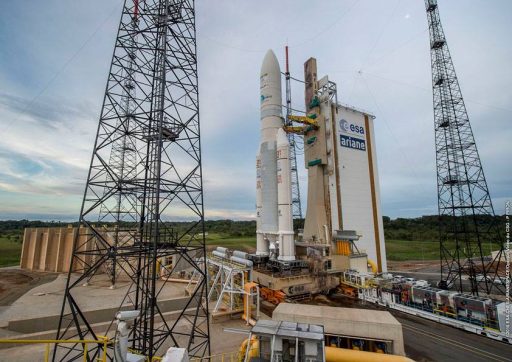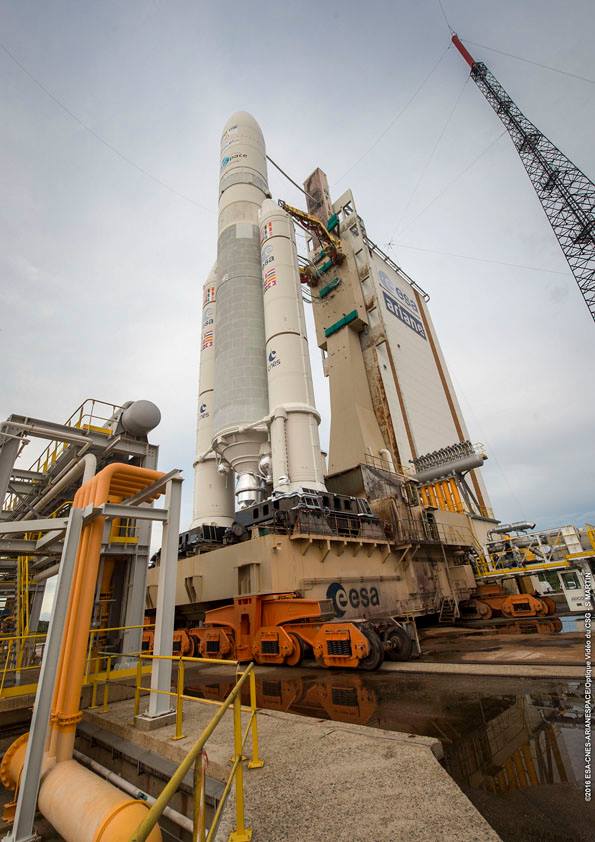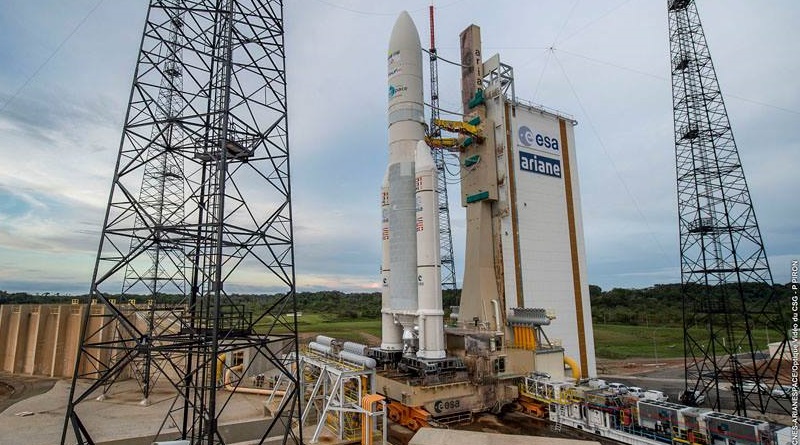Intense Upper Level Winds cause Ariane 5 Launch Scrub – New Attempt Saturday

Arianespace had to scrub Friday’s planned Ariane 5 launch with a pair of heavy communications satellites due to unfavorable Upper Level Winds. Pending progression of winds aloft, Ariane 5 will try again on Saturday during a 70-minute window opening at 20:30 UTC.
The VA230 so far had a bumpy path to liftoff with two-technical launch delays and this latest weather-related issue not permitting the launch of the EchoStar 18 and BRIsat satellites.
Liftoff had been scheduled for June 8 but had to be postponed the day before when a fluid umbilical between the Mobile Launch Table and the rocket’s second stage was found in a faulty condition. This component was replaced and teams were hoping to roll the vehicle to the launch pad on Wednesday, however, another umbilical issue again required a component replacement, leading to a further 24-hour delay.
Finally arriving at the ELA-3 launch complex on Thursday, Ariane 5 was ready to head into its lengthy countdown operation. No issues were encountered on Friday and the rocket stood fully fueled atop its pad when high altitude winds strengthened beyond the launcher’s limits.

Upper Level Winds are a structural dynamics issue and have to be considered when plotting the vehicle’s ascent profile. Strong shear during dynamic flight events can nudge the vehicle off its flight path or even cause structural failures, therefore close attention is paid to wind conditions in the upper atmosphere and several weather balloons are released in the hours leading up to launch.
Teams will continue to monitor the atmosphere over the Guiana Space Center through soundings and balloon data to assess whether a launch attempt on Saturday will be possible.
Hidden under Ariane’s payload fairing is a pair of communications satellites built by Space Systems Loral, setting a new record for the heaviest payload delivered to a Geostationary Transfer Orbit by Ariane 5. EchoStar 18, a heavy commercial communications satellite, and BRIsat, the word’s first dedicated banking satellite, have a combined mass of 10,730 Kilograms (including their payload adapters holding them in position atop the two-stage rocket.)
EchoStar 18 is operated by Dish Network Corporation (EchoStar) to deliver broadcasting services to the Continental United States, Alaska, Hawaii, Puerto Rico and Cuba to a customer base of nearly 14 million. The spacecraft sports 78 Ku-Band transponders and exclusively uses spot-beam technology for the transmission of the communications carriers to create a system with a high-degree of flexibility.
BRIsat is the first dedicated satellite for banking purposes, operated by Bank Rakyat Indonesia to provide reliable communications services to BRI’s 11,000 bank branches across the Indonesian Islands as well as connecting 237,000 electronic channel outlets. The satellite carries 9 Ku-Band and 36 C-Band transponders utilized by BRI as well as the Indonesian government.

